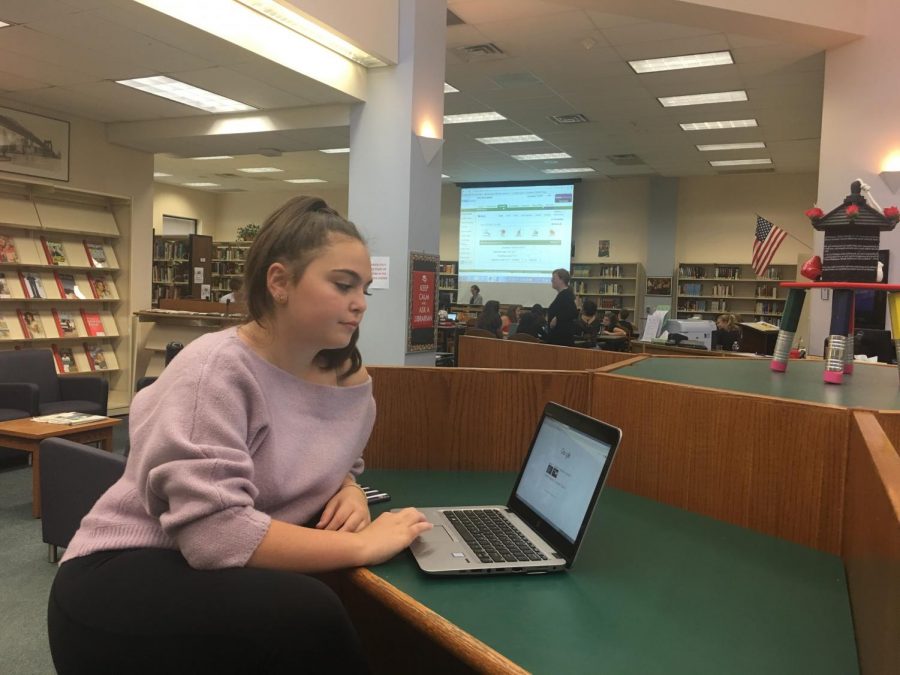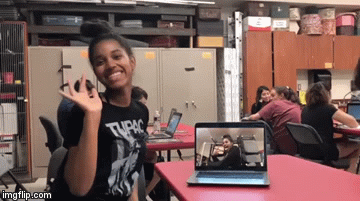High school goes paperless after one-to-one laptop program
November 6, 2017
The high school aims to use less paper after implementing the one-to-one laptop program this year.
Principal John Arlotta made the decision to transform the high school into a campus that uses less paper in an attempt to make a smoother transition into the new educational systems that are supposed to be implemented this year.
“Our aim is to eventually go (completely) paperless. Certainly each student having a laptop and our eventual move to a new Learning Management System, Schoology, will be instrumental in this process,” Arlotta said.
This year, the school introduced the one to one laptop program. This program provides each student with a laptop of his or her own. During the summer, students were asked to come to the school and pick up their laptops in exchange for $60 and a sign off on the Acceptable Use Policy. The decision to use less paper was made while this process was going on.
In October, Schoology will replace School Fusion. Therefore, Arlotta wants more laptop use, and less paper in order to make students more comfortable with the new learning system.
However, this isn’t the only reason. Arlotta also welcomes replacing paper with computers to be more similar to college learning.
“It is certainly consistent with what is going on at the college level, which is where we look in best preparing our students,” Arlotta said.
According to Arlotta, an added bonus of using less paper is less waste.
Students, though, have come across some issues. Students must now go through a new process to print, whereas last year they were able to print freely from Media Center computers. After these computers were removed, students fund themselves unable to print documents without first sending it to a faculty member and asking for it to be printed.
Teachers, too, are still requiring students to physically hand in assignments.
“It’s not fair that teachers are still requiring us to hand in paper assignments. They pile everything on us and have us deal with it,” sophomore Jennifer DeStefano said.
DeStefano said that she understands how the switch to computers and the use of less paper is supposed to prepare students for college and be environmentally friendly. However, it’s not what she’d normally associate with high school and she feels like we aren’t really ready for it, because they haven’t sorted out all of the kinks.
DeStefano isn’t the only student who feels this way.
“I feel more teachers should be on board because some assignments are required to be printed and kids who don’t have printers at home get stuck,” sophomore Olivia McLellan said. “Not everyone has a working printer.”
Students have various solutions to the printing problem.
“They should add desktops back into the media center, or give our laptops printing capabilities,” DeStefano said. “They took such careful consideration into getting us laptops, so I think that they should work harder to sort out the problems associated with them.”
McLellan offered the same resolution to the problem, but she also thought that the teachers should stick to using less paper.
She hopes that her solutions are taken into consideration, as she isn’t a big fan of the printing process.
McLellan went through the new procedure recently when she had to print out a homework assignment.
McLellan walked into the library, and saw no desktops in sight. She asked the middle school librarian to help her print, and the librarian referred her to new Media Center Specialist Kim Hayes. McLellan had to sign into Google Docs from Hayes’ computer, access her document, and then print from there.
“When I went in, the librarian made it clear the school has gone paperless. However, she was very kind and let me print what I needed from the computer anyway,” McLellan said.
Even though she found the new process of printing a little inconvenient, she said that the librarian that assisted her (Ms. Hayes) was very helpful. She even corrected an APA style mistake in McLellan’s document.
Last year, there were desktops all around the media center, and all of them had printing capabilities.
“Last year I would go all the time in the morning because my printer breaks a lot. So, before we got laptops it wasn’t a problem to print. I could just log onto a desktop and print whatever I needed,” DeStefano said. “The new process is way too complicated, they should have kept some of the desktops in the media center, or given our laptops printing capabilities.”
Both McLellan and DeStefano see the paperless policy lasting. McLellan thinks that the decision will continue for years to come, as long as teachers get on board soon. DeStefano thinks that the decision to use less paper has a bright future.
“The paperless policy will stick because technology is continuously advancing. I think in the long run, it would make the most sense to be involved with paperless,” DeStefano said.




